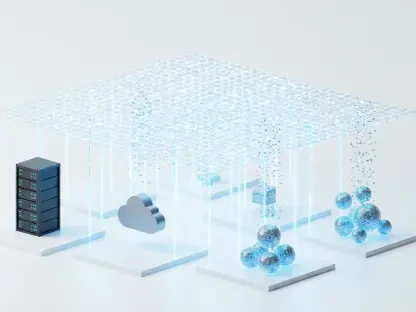A world rides on wireless connectivity, yet the hidden enabler often remains the unsung hero: the network’s brain. Enter Nvidia’s ARC-Compact, a breakthrough that’s rewriting the rules of wireless networks as it embraces the potential of artificial intelligence.
Unlocking AI’s Potential in the Wireless Arena
Artificial Intelligence is reshaping a myriad of industries, and the telecommunications field is no exception. Traditionally defined by operational rigidity, the wireless network landscape is now poised for transformation. But how does AI, often associated with autonomous vehicles and personalized ads, weave into the fabric of wireless networks? As energy demands soar and the leap to 6G looms, AI’s promise to revamp network architectures becomes more compelling by the day.
Current Wireless Network Challenges
Today’s wireless networks battle inefficiencies inherent in traditional radio access network (RAN) systems. The push for seamless migration from 5G to 6G underscores the urgency for solutions that are not just reactive but predictive. The demand for network virtualization and adaptable infrastructures further complicates the landscape. Legacy systems, operating at meager efficiencies, struggle to keep up with the modern data surge. Consequently, the industry finds itself at a crossroads—innovation is no longer optional but imperative.
Nvidia’s ARC-Compact: A Bridge Between AI and RAN
Nvidia, a titan in AI and GPU developments, steps forward with the ARC-Compact, fusing AI prowess with RAN technologies. This integration isn’t just a tech merger; it’s a paradigm shift. The ARC-Compact offers tangible gains in efficiency and performance by introducing AI-driven optimizations directly into the network’s core processes. Network operators are presented with a future-ready, AI-native framework capable of seamless transitions, paving the path to next-gen connectivity.
Inside Look at ARC-Compact’s Innovations
The ARC-Compact is more than a technical marvel; it’s a product of collaborative insights and cutting-edge research within Nvidia and the telecom sector. Experts like Soma Velayutham speak of its transformative capabilities, while recent demonstrations at industry gatherings highlight its efficiency. As Nvidia weaves its innovations into established infrastructures, the ARC-Compact is setting new benchmarks in network performance.
Thriving in AI-Native Networks: A Strategic Blueprint
Transitioning to AI-native networks demands purposeful strategies. Operators must first decouple existing RAN functions from hardware constraints, migrating them to software-centric environments. Adopting standardized frameworks such as those championed by Nvidia will further streamline this transformation, enabling seamless integration of AI advancements. These strategic steps position networks to leverage enhanced RAN functionality, ensuring readiness for both current and future demands.
Ultimately, the ARC-Compact underscores a significant leap forward in marrying AI with telecommunications. Nvidia’s initiative has paved the way for better efficiencies, enriched experiences, and a visionary approach to wireless connectivity challenges. As the telecommunications industry navigates through this evolution, the incorporation of AI into network ecosystems promises not only to address current inefficiencies but also to anticipate and adapt to future technological landscapes.









